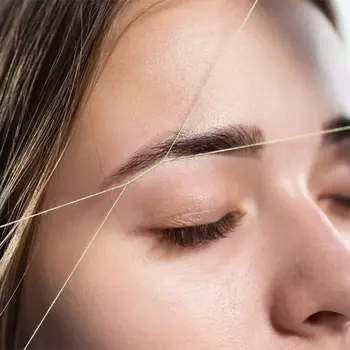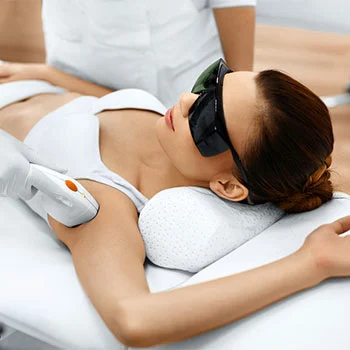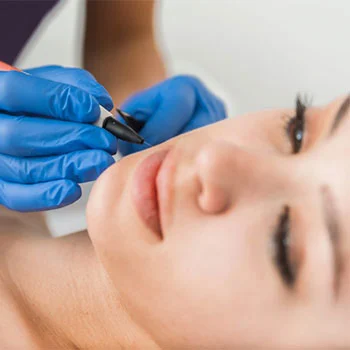What is waxing?
Waxing is a method of hair removal that involves applying a thin layer of wax onto the skin in the area where hair is to be removed. A cloth or paper strip is then pressed on top of the wax and pulled off quickly in the opposite direction of hair growth, removing the hair from the root. Waxing can be done on various parts of the body, including the legs, arms, face, bikini area, and more. It is a popular hair removal method because it provides longer-lasting results compared to shaving as it removes hair from the root, resulting in smoother skin for a longer period of time.
Who is waxing suitable for?
Waxing is a suitable hair removal method for many people, but it may not be suitable for everyone. Here are some considerations for who waxing may be suitable for:
- Those looking for longer-lasting results: Waxing removes hair from the root, so the results typically last longer compared to shaving.
- People with different hair types: Waxing can be effective for removing coarse, fine, or even short hair.
- Individuals with sensitive skin: While waxing can cause some discomfort, it is generally safe for sensitive skin types. However, it's essential to do a patch test first to check for any adverse reactions.
- Those who want to avoid daily maintenance: Waxing provides smoother skin for an extended period, reducing the need for daily hair removal.
- People who prefer a professional treatment: While at-home waxing kits are available, some individuals prefer to have waxing done by a professional for a more precise and thorough hair removal experience.
It's essential to consider any skin conditions, allergies, or medications that may affect the suitability of waxing. Consulting with a dermatologist or a licensed esthetician can help determine if waxing is a suitable hair removal option for an individual.
Types of waxing
There are several types of waxing methods commonly used for hair removal, each suited for different areas of the body and individual preferences. Here are some of the main types of waxing:
Soft wax
Also known as strip wax, this type of wax is applied in a thin layer on the skin and removed using cloth or paper strips. Soft wax is commonly used on larger areas of the body like legs, arms, and back.
Hard wax
Hard wax, also called stripless wax, is applied in a thick layer on the skin and hardens as it cools. Once hardened, the wax is removed without the need for cloth or paper strips, making it less painful for sensitive areas like the face, underarms, and bikini area.
Sugaring
Sugaring is an alternative to traditional waxing that uses a sticky paste made of sugar, lemon juice, and water to remove hair. Sugaring is known for being gentler on the skin and less painful than waxing.
Cold wax
Cold wax comes pre-applied on strips and does not require heating before use. The strips are pressed onto the skin and then quickly pulled off to remove hair. Cold wax is convenient for travel and quick touch-ups.
Hot wax
Hot wax is heated before application and provides a more thorough and precise hair removal method compared to warm wax. It is often used for smaller and more sensitive areas like the face and bikini line.
Film wax
Film wax is a type of hard wax that creates a thin, flexible layer on the skin. It is suitable for sensitive areas and effectively grips shorter hairs for efficient hair removal.
Each type of waxing method has its advantages and is suitable for different areas of the body and individual preferences. It's essential to choose a qualified practitioner who can recommend the best waxing method for your specific needs.
What’s the process like?
The process of waxing involves several steps:
- Preparation: The area to be waxed is cleaned to remove any dirt, oil, or lotions that could interfere with the wax adhering to the hair.
- Application of wax: A thin layer of warm wax is applied to the skin in the direction of hair growth using a spatula or roller. There are different types of wax, such as hard wax and soft wax, each suitable for specific areas of the body.
- Placement of strip: A cloth or paper strip is placed over the waxed area and pressed down firmly to ensure it adheres to the wax.
- Removing the strip: The strip is quickly pulled off in the opposite direction of hair growth, pulling the hair out from the root.
- Finishing touches: Any remaining wax residue is usually removed, and soothing lotions or oils may be applied to calm the skin and reduce redness.
It's essential to follow proper waxing techniques to minimize discomfort, reduce the risk of ingrown hairs, and achieve the best results. For those new to waxing, it may be helpful to seek professional services from a licensed esthetician or follow detailed instructions if doing waxing at home.
Preparation
To prepare for a waxing session, there are several steps you can take to ensure a more comfortable and effective hair removal experience:
- Hair length: The ideal hair length for waxing is typically about 1/4 to 1/2 inch long. If your hair is too short, the wax may not effectively grip the hair for removal. If it's too long, trim it to the recommended length before your appointment.
- Exfoliation: Gentle exfoliation a day or two before waxing can help remove dead skin cells and prevent ingrown hairs. However, avoid harsh exfoliation on the day of your waxing session as it can irritate the skin.
- Hygiene: Ensure the skin is clean and free of oils, lotions, or creams on the day of your waxing appointment. This helps the wax adhere better to the hair for optimal removal.
- Pain management: If you're concerned about discomfort during waxing, you can take an over-the-counter pain reliever 30 minutes before your appointment. Avoid caffeine, alcohol, and other stimulants that can increase sensitivity.
- Timing: Schedule your waxing appointment at least a few days before any special events or occasions to allow any redness or sensitivity to subside.
- Clothing: Wear loose-fitting clothing to your waxing appointment to prevent irritation to the waxed area after the treatment.
- Consultation: If you have any skin conditions or allergies, or are using medications that may affect your skin's sensitivity, inform your practitioner before the waxing session.
By following these preparation tips, you can help ensure a smoother and more successful waxing experience.
Recovery and aftercare
After a waxing session, it is essential to follow proper aftercare to help the skin recover and maintain smooth results. Here are some tips for recovery and aftercare following waxing:
- Avoid heat: Stay away from hot baths, saunas, steam rooms, and direct sunlight immediately after waxing, as the skin may be sensitive and prone to irritation.
- Avoid tight clothing: Wear loose-fitting clothing to allow the skin to breathe and reduce friction on the waxed area, minimizing irritation.
- Moisturize: Hydrate the skin by applying a gentle, fragrance-free moisturizer to keep the skin nourished and prevent dryness.
- Avoid exfoliation: Refrain from exfoliating the waxed area for the first 24-48 hours to prevent irritation and ingrown hairs.
- Avoid heavy workouts: Skip intense workouts or activities that may cause excessive sweating immediately after waxing to prevent irritation and clogged pores.
- Avoid touching: Try to avoid touching the waxed area to prevent introducing bacteria and causing irritation.
- Avoid sun exposure: Protect the waxed area from direct sunlight and tanning beds, as the skin may be more sensitive to UV rays after waxing.
- Follow-up care: If you experience any redness, bumps, or ingrown hairs after waxing, gently cleanse the area and apply a soothing product like aloe vera or tea tree oil.
By following these aftercare tips, you can help promote skin healing, reduce irritation, and maintain smooth results after waxing. If you have any concerns or experience persistent redness or discomfort, consult with your practitioner for further guidance.
What body areas can be waxed?
Waxing can be done on various body areas to remove unwanted hair. Some common body areas where waxing is performed include:
- Legs: Waxing can be done on the lower legs, upper legs, or full legs to remove hair for smooth skin.
- Arms: Both the lower arms and upper arms can be waxed to remove hair.
- Underarms: Waxing the underarm area is a popular choice for longer-lasting hair removal.
- Bikini area: Waxing can be done on the bikini line, extended bikini, Brazilian, or Hollywood styles for hair removal in the intimate area.
- Face: Waxing can be used to remove facial hair on areas such as the upper lip, chin, eyebrows, and cheeks.
- Back: Waxing is an option for removing unwanted hair on the back for a smoother appearance.
- Chest: Men often opt for chest waxing to remove hair for a cleaner look.
- Abdomen: Waxing can be done on the abdomen to remove hair for aesthetic purposes.
- Hands and fingers: Waxing can target hair on the hands and fingers for those looking for hair removal in these areas.
- Feet and toes: Waxing can also be done on the feet and toes to remove unwanted hair.
Side effects of waxing
While waxing is a common and effective hair removal method, it can have some side effects, especially if not done properly or if the skin is sensitive. Some potential side effects of waxing include:
- Pain or discomfort: Waxing can be uncomfortable, especially for those with sensitive skin or those new to the procedure. The sensation of pain varies depending on individual pain tolerance and the area being waxed.
- Redness and irritation: It is common to experience redness and minor irritation after waxing, which usually subsides within a few hours to a day. Sensitive skin types may experience more pronounced redness.
- Ingrown hairs: Ingrown hairs can occur when hair follicles become trapped under the skin after waxing. Proper exfoliation and skincare can help prevent ingrown hairs.
- Skin sensitivity: Waxing can temporarily increase skin sensitivity, making the skin more prone to irritation, especially if harsh products are applied post-waxing.
- Allergic reactions: Some individuals may be allergic to the ingredients in the wax or post-waxing products, leading to allergic reactions such as redness, itching, or swelling.
- Burns or skin damage: If the wax is too hot or left on the skin for too long, it can cause burns or damage to the skin. It's essential to ensure the wax temperature is safe and to follow proper waxing techniques.
- Infection: If the waxing equipment or the practitioner's hands are not properly sanitized, there is a risk of bacterial or fungal infections. It's crucial to choose a reputable and hygienic salon for waxing services.
- Broken capillaries: Aggressive waxing or improper technique can lead to broken capillaries, especially on delicate areas like the face.
To minimize the risk of side effects, it's essential to choose a skilled and experienced practitioner, follow proper aftercare instructions, and communicate any skin sensitivities or allergies before the waxing session.
How much does waxing cost?
The cost of waxing can vary depending on several factors, including the area being waxed, the salon or spa's location, the practitioner's experience, and the type of wax used. Here are some general price ranges for common waxing services:
- Eyebrows: Eyebrow waxing typically ranges from $10 to $25, depending on whether it's a basic shaping or includes additional services like tinting.
- Legs: Full-leg waxing can range from $50 to $100, while half-leg waxing can range from $30 to $60.
- Bikini area: Bikini waxing prices vary based on the style chosen (e.g., bikini line, Brazilian, Hollywood) and can range from $25 to $75 or more.
- Underarms: Underarm waxing usually costs between $15 and $30.
- Arms: Full-arm waxing can range from $30 to $60, while half-arm waxing may cost between $20 and $40.
- Back: Back waxing prices can vary widely but generally range from $40 to $80 or more.
- Chest: Chest waxing for men typically ranges from $40 to $80, depending on the area's size.
- Facial waxing: Prices for facial waxing services like lip, chin, or cheeks can range from $10 to $25 per area.
It's essential to inquire about the specific pricing at your chosen salon or spa, as prices can vary significantly based on location and other factors. Additionally, some establishments offer package deals or discounts for multiple waxing services or regular clients.
Waxing vs. sugaring: what’s the difference?
Waxing and sugaring are both popular hair removal methods that offer effective results, but they differ in terms of ingredients, application, and results. Here are the key differences between waxing and sugaring:
Ingredients:
- Waxing: Waxing involves using a resin-based wax that may contain artificial ingredients, resins, and chemicals to adhere to and remove hair from the skin.
- Sugaring: Sugaring utilizes a natural paste made from sugar, lemon juice, and water. Sugaring paste is typically all-natural and does not contain artificial ingredients or chemicals, making it a more natural hair removal option.
Application:
- Waxing: Wax is applied in the direction of hair growth and removed against the hair growth using cloth or paper strips. This method can sometimes cause discomfort, especially for those with sensitive skin.
- Sugaring: Sugaring paste is applied in the direction of hair growth and removed in the same direction as hair growth. The paste sticks to the hair more than the skin, leading to potentially less pain and irritation compared to waxing.
Adherence:
- Waxing: Wax adheres to both the hair and the skin, which can sometimes result in more discomfort during hair removal, especially for those with sensitive skin.
- Sugaring: Sugaring paste primarily adheres to the hair and not the skin, making it a gentler option that may cause less irritation and pain during hair removal.
Hair length:
- Waxing: Waxing can effectively remove shorter hairs, making it a suitable option for maintaining smooth skin between treatments.
- Sugaring: Sugaring is effective in removing shorter hairs compared to waxing, as the paste can grip even shorter hair lengths for successful removal.
Exfoliation:
- Waxing: Waxing can sometimes cause slight exfoliation as it removes dead skin cells along with the hair.
- Sugaring: Sugaring is a more gentle exfoliating method, as the paste does not adhere as strongly to the skin, reducing the risk of skin irritation or damage.
Ultimately, the choice between waxing and sugaring depends on individual preferences, skin sensitivity, and desired hair removal results. Both methods have their advantages, and it's essential to consult with a skilled practitioner to determine the best option for your hair removal needs.
FAQs
Can I wax my body/face at home?
Waxing at home is a common practice for many individuals who prefer the convenience and cost-effectiveness of DIY hair removal. However, if you are new to waxing, it may be beneficial to first visit a professional esthetician to understand the proper techniques and best practices for waxing different areas of the body.
Does waxing remove hair permanently?
No, waxing is a temporary hair removal method that removes hair from the root, resulting in smoother skin for a few weeks (typically 3-6 weeks).
Is waxing painful?
Waxing can be uncomfortable for some individuals, as it involves pulling hair out from the root, which can cause a brief sensation of pain or discomfort. The level of pain experienced during waxing can vary depending on your pain tolerance, body area, skin sensitivity, and the technique and experience of the practitioner.
How long does a waxing session last?
The duration of a waxing session can vary depending on several factors, including the area of the body being waxed, the individual's hair growth, the practitioner's experience, and the type of waxing method used. On average, a waxing session can last anywhere from 15 minutes to 1 hour.
Does waxing grow more hair?
Contrary to a common myth, waxing does not cause hair to grow back thicker or more abundant. In fact, waxing can have the opposite effect over time.
What is a Brazilian wax?
A Brazilian wax is a popular hair removal technique that involves the complete removal of hair in the pubic area, including the front, back, and everything in between



